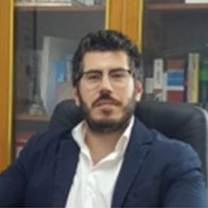Additive Manufacturing of Light Metal Alloys
A special issue of Metals (ISSN 2075-4701). This special issue belongs to the section "Additive Manufacturing".
Deadline for manuscript submissions: 30 June 2024 | Viewed by 3375
Special Issue Editors
Interests: manufacturing; additive manufacturing; solid state processes; microstructure; cold spray
Special Issues, Collections and Topics in MDPI journals
Interests: additive manufacturing; metallurgy; surface analysis; design of experiments; surface finishing treatments
Interests: additive manufacturing; friction stir welding; characterization; metallurgy; mechanical properties; surface analysis
Special Issue Information
Dear Colleagues,
Interest in metal additive manufacturing (AM) has increased steeply over the last twenty years. This is due to the great advantages offered by metal AM technologies such as laser–powder bed fusion (L-PBF), electron beam–powder bed fusion (E-PBF) and laser-engineered net shaping (LENS): these include high design freedom, waste reduction, parts performance optimization and strong tuning of material properties.
In this context, light alloys such as aluminum-, titanium- and magnesium-based alloys represent one of the most investigated class of metal alloys due to their intriguing properties such as high strength-to-weight ratios, high corrosion resistance and wide possibilities of properties enhancing through alloying. When these advantages are combined with the ones provided by AM, it is clear that the interest in this field is huge from both academia and industry.
As witnessed over the last years by a large number of published papers, the field of the AM of light alloys represent a very hot topic, with direct industrial implications for several fields and especially for the ones with strict requirements of performance with a contained parts weight (i.e., aerospace, automotive, etc.).
With this premise, this Special Issue of Metals represents a will to contribute to the growth of the know-how in the field of processing light alloys by means of AM technologies, mostly intended as powder-based ones. The contribution may involve any aspect concerning the subject matter, including process–properties relationships, more sustainable and effective processing approaches, improvements in the pre and post-process handling steps and so on. Your contribution to this 2022 account is highly valuable and appreciated. We therefore invite you to contribute with original research work concerning the AM of light alloys.
The topics covered by this Special Issue include, but are not limited to:
- The study of powder spreading in additive layer manufacturing;
- The modeling of additive manufacturing processes;
- New technologies;
- The development of processes for new alloys and new mixtures;
- Surface finishing;
- The sustainability of additive processes;
- Characterization techniques;
- Microstructure and mechanical properties.
Dr. Antonello Astarita
Dr. Andrea El Hassanin
Dr. Alessia Teresa Silvestri
Guest Editors
Manuscript Submission Information
Manuscripts should be submitted online at www.mdpi.com by registering and logging in to this website. Once you are registered, click here to go to the submission form. Manuscripts can be submitted until the deadline. All submissions that pass pre-check are peer-reviewed. Accepted papers will be published continuously in the journal (as soon as accepted) and will be listed together on the special issue website. Research articles, review articles as well as short communications are invited. For planned papers, a title and short abstract (about 100 words) can be sent to the Editorial Office for announcement on this website.
Submitted manuscripts should not have been published previously, nor be under consideration for publication elsewhere (except conference proceedings papers). All manuscripts are thoroughly refereed through a single-blind peer-review process. A guide for authors and other relevant information for submission of manuscripts is available on the Instructions for Authors page. Metals is an international peer-reviewed open access monthly journal published by MDPI.
Please visit the Instructions for Authors page before submitting a manuscript. The Article Processing Charge (APC) for publication in this open access journal is 2600 CHF (Swiss Francs). Submitted papers should be well formatted and use good English. Authors may use MDPI's English editing service prior to publication or during author revisions.
Keywords
- metal additive manufacturing
- light alloys
- aluminum
- titanium
- magnesium
- lightweight structures
- characterization
- sustainability
- modeling







